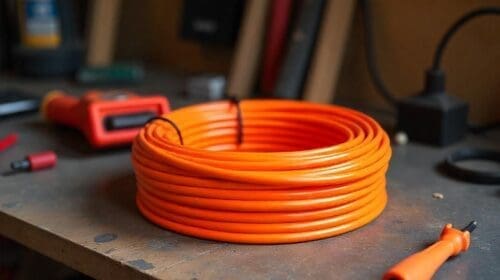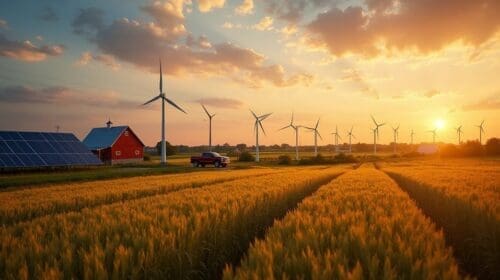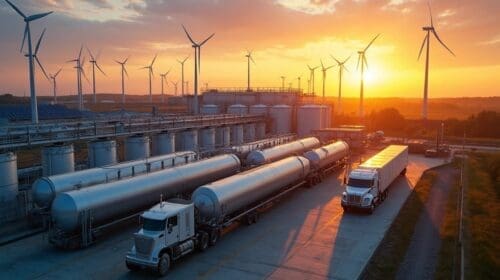In October 2023, the U.S. Department of Energy (DOE) unveiled the largest-ever investment in the country’s utility grid — nearly $3.5 billion in awards to share between 44 states, and that’s just to start. Officials are planning billions of dollars more in funding in the future. The DOE will distribute the funds through its Grid Resilience and Innovation Partnerships (GRIP) program, which will provide countless benefits to Americans.
Updating Infrastructure
The U.S. utility grid is rapidly aging. Over 50 percent of the country’s power transformers and transmission lines were installed before 1970, putting them at risk of failure. Severe weather events have accelerated the process — extreme heat, cold and rainfall are testing the embattled grid, pushing it to its limits.
The DOE’s upgrades, which come from the Biden Administration’s Bipartisan Infrastructure Law, will replace outdated infrastructure. Since the U.S. is in the midst of a nationwide transformer shortage, some of the funds can go toward reconditioning old transformers to add several years to their life span. Technicians can also replace old power lines that currently pose an extreme wildfire risk to the landscape.
Helping Disadvantaged Communities
The new energy investments will comply with the federal Justice40 initiative, which stipulates that 40 percent of the benefits of infrastructure projects go toward historically disadvantaged communities. The DOE’s goals when implementing Justice40 in these areas include:
- Lowering people’s energy burden
- Increasing access to low-cost capital
- Increasing energy resilience and democracy
- Making clean energy jobs and training more accessible
- Improve access to clean energy
Under the Justice40 program, the DOE must consult community stakeholders and ensure they are meaningfully involved in determining a program’s benefits. It must also compile reports on the benefits it provides to disadvantaged communities.
Protecting Americans
One of the most crucial ways the grid updates will help people is by keeping the power on during severe weather. A 2021 winter storm in Texas — dubbed the Great Freeze — was a wake-up call for many Americans about the tenuous state of the country’s electric grid.
As nearly 10 million homes lost power, people were left without heat, light and water, spurring homeowners to burn trash indoors to keep warm and boil snow. Many people watched helplessly as the food in their fridges and freezers spoiled, leaving them with nothing to eat, and roads were blocked due to thick ice. Medical devices like CPAP machines were unusable.
By the time the storm passed, more than 200 people and countless animals had died because of the grid failure. Allowing a repeat of the 2021 storm would be inexcusable. The GRIP investments cannot bring back those who were lost, but they can prevent future tragedies.
Expanding Renewable Energy
According to Energy Secretary Jennifer Granholm, the DOE’s investment will provide a 10 percent boost to the country’s renewable energy capacity, supporting over 35 GW of renewable energy in total. Interest in wind and solar power is steadily increasing as America seeks to lower its carbon footprint.
Renewables are readily available and will never run out, making them attractive options when compared to fossil fuels. Adding more renewable energy jobs will benefit communities that lack access to coal, oil and natural gas, bringing new economic opportunities to these areas. Ranchers can also add wind turbines and solar panels to their land for an additional income stream.
A Much-Needed Boost
The DOE’s investment in the utility grid comes at a critical moment in American history. As the population grows, the climate changes and the current electric grid begins to slow down, there has never been a more urgent need for funding to power the country. The GRIP program won’t just keep the lights on — it will save countless lives.
Oil and gas operations are commonly found in remote locations far from company headquarters. Now, it's possible to monitor pump operations, collate and analyze seismic data, and track employees around the world from almost anywhere. Whether employees are in the office or in the field, the internet and related applications enable a greater multidirectional flow of information – and control – than ever before.


![Why Enhanced Geothermal Energy Could Be Your Next Smart Investment [2025 Guide]](https://b1006343.smushcdn.com/1006343/wp-content/uploads/2025/06/Why-Enhanced-Geothermal-Energy-Could-Be-Your-Next-Smart-Investment-2025-Guide-500x280.jpg?lossy=2&strip=1&webp=1)





